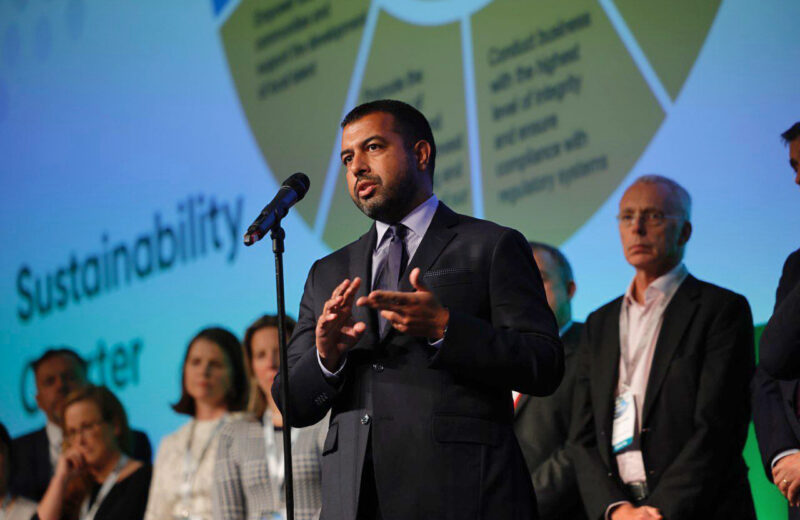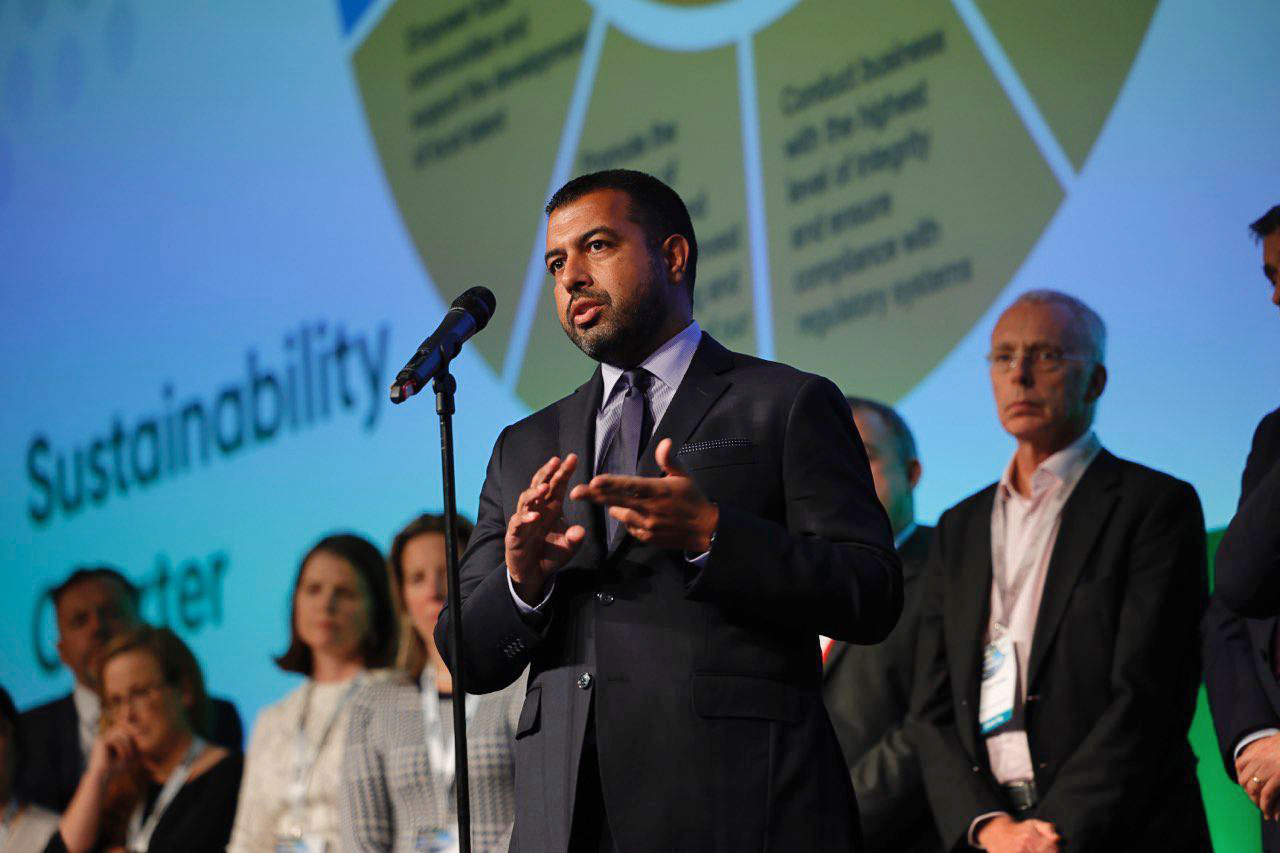HI Uplift: LCI sets three top goals for 2030, after SMFL acquires 35% stake

Operating lessor LCI has set out three top goals to achieve by 2030, after revealing that Sumitomo Mitsui Finance and Leasing Company (SMFL) is to acquire a 35% stake in the business. SMFL and LCI’s parent company Libra Group have pledged to grow LCI’s business by $1.5bn over the coming years with significant capital investment by shareholders. The three main goals are: to drive growth, align the business with the United Nation’s (UN’s) Strategic Development Goals (SDG) and deliver efficiencies, Jaspal Jandu, CEO, LCI tells Helicopter Investor.
Jandu’s top goal is simple: “We want to drive growth.” He says: “We are looking at $1.5bn of fleet growth over the medium term – or the next three to five years.” LCI has the flexibility to adapt to changing circumstances to deliver that growth, he added.
Goal number two is to continue aligning LCI’s business with the interest of the shareholders (SMFL and Libra Group) to the UN’s SDG targets. These are 17 interlinked objectives designed to serve as a “shared blueprint for peace and prosperity for people and the planet, now and into the future”. (The UN’s top two objectives are to end poverty in all its forms and to end hunger and achieve food security).
“The helicopter industry has underplayed its important contribution to these SDG goals,” says Jandu. “We talk a lot about carbon and fuel efficiency but virtually every day, one of our helicopters saves someone’s life.” Also, the fact that helicopters support offshore wind generation is not promoted enough.
The third goal is to achieve the “huge amount” of synergies offered by SMFL acquiring a 35% stake in the business. Chief among these efficiencies will arise from the wider deployment of LCI’s in-house developed custom lease management tool. “LCI is just bringing AI [artificial intelligence] and deep learning to this, so we want to capitalise on the benefits.”
So, how does Jandu plan to achieve the $1.5bn growth ambition set out by shareholders SMFL and Libra Group? The route to accelerated growth includes: harnessing the business’s financing leasing toolbox, supplying burgeoning demand for helicopters and delivering Advanced Aerial Mobility (AAM) solutions.
“The new investment allows the industry access to a financing leasing toolbox that is very broad – including the typical suite of products including operating leases and finance leases,” Jandu tells us. “But now with LCI, Libra Group and SMFL, we can offer PDP [pre-delivery payment] provision/financing, VAT financing, trade-ins, extra equipment financing, battery leasing solutions, network charging and a range of other products which can accelerate our growth greatly. We already provide such products to the market but with Libra Group and SMFL working together, we can provide them in greater depth.”
Supplying rising demand for helicopters – not least replacing ageing aircraft – will also drive significant growth. Many operators want to benefit from new helicopter technology and equipment, with the latest safety standards and the newest EMS interior kits, he says. “We want to support our operators in driving innovation and growth. There’s a replacement cycle that is long past due. The next five-to-10 years will see a number of new innovations and aircraft coming to the market.” He highlights advances in AW169, AW139 and AW189 technology, together with the new Airbus H145s, H160s and H175s. “We intend to say in 2030 that we made a real dent in helping to drive replacement growth,” says Jandu.
And then there are the naked numbers – the sheer scale of demand expected. Jandu highlights the recent Airbus Helicopters forecast, which predicted demand for more than 16,000 units over the next 20 years. This represents about 800 units a year, valued at more than Є120bn ($130.62bn). “No one stakeholder can access that level of capital,” he tells us.
“And if we delay the replacement cycle any longer, we will only be delivering new aircraft solely in lieu of older ones, which will have been moved to other roles or parted out. It leaves no buffer for growth.” It’s a complex picture, he conceded. A lot of extra helicopters will be needed for offshore and onshore support, together with Search and Rescue (SAR) missions and Emergency Medical Services (EMS). Then there are the challenges of supply chain problems and the delayed replacement cycle. “We risk getting to this pinch point where you simply don’t have enough helicopters for growth. If you were to speak to me in 2030, that is a central problem we have to address in the upcoming cycle.”
Part of the solution lies in the industry coming together to agree longer lease terms for end users and removing termination for convenience clauses, says Jandu. “Lessors generally want to help move this business forward, but we do need alignment up and down stream along the value chain.”
By 2030, LCI will be working with clean technology in machines and networks – whether battery powered or hybrid-powered, e-VTOL or c-VTOL. “e-VTOLs are already front of mind for LCI. We have relationships with BETA Technologies and its ALIA-250, and Elroy Air’s Chaparral [autonomous cargo drone]. This enables OEMs access to our operator network. So, some of the early adopters of this technology will be the helicopter operators.”
SMFL’s 35% stake will also enable “deep and meaningful access” to the Asian and Japanese markets, he says. “Cities such as Tokyo, London and Rio are huge metropolises with lots of time poor and wealthy people. Although LCI is primarily focussed on cargo and logistics markets, if you are going to see passenger AAM technology, it’s probably going to be there first.”
But it’s not just AAM aircraft that deserve investment and development, it’s the infrastructure – including charging networks – to support them. “We are going to have to evolve our thinking and language here, even within LCI. So maybe, power-by-the-hour turns into power-by-the-electron at some stage.”
Jandu ends with an approach regarding LCI’s journey over the next seven years to 2030 and beyond: “When making plans, think big. When making progress, think small.”

LCI CEO Jaspal Jandu’s top goal is simple: “We want to drive growth.”
Subscribe to our free newsletter
For more opinions from Helicopter Investor, subscribe to our email newsletter.






